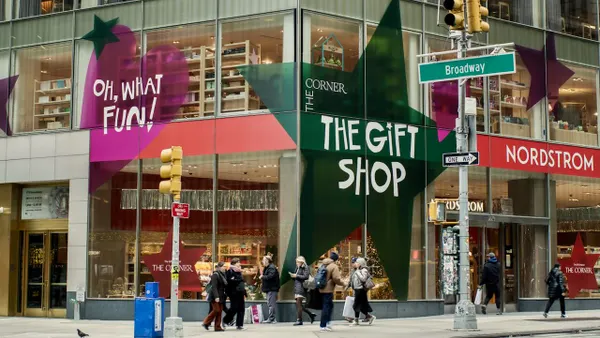The following is a contributed piece by Forrest V. Morgenson III, the director of research at the American Customer Satisfaction Index (ACSI). The views are the author's own.
The booming economy might be bad news for holiday shopping.
Second-quarter U.S. GDP growth reached 4.2%, the highest in several years. Consumer spending growth, which makes up roughly 70% of GDP, hit 3.8% in the second quarter of 2018. The S&P 500 reached several new all-time highs in August and September.
That strength is already affecting hiring across the economy, and it could mean a slowdown in spending and worse customer service for holiday shoppers come November and December.
A strong economy is good news for workers, bad news for customers
According to the American Customer Satisfaction Index (ACSI), consumers are only a fraction of a point less satisfied today (on a 100-point scale) than they have ever been with their purchases. The national ACSI score is 76.9, down slightly from a peak of 77.0 in the first quarter of 2017.
Not surprisingly, the strong economy has led to a drop in the unemployment rate, which fell to 3.7% in September — the lowest level since 1969.
Such low rates result in a much tighter labor market, and many Americans are seeking new, better roles. In July, almost 3.6 million people quit their jobs, a record-high number, many of them seeking better pay and more prestigious positions.
All these signs indicate good news, but somewhat counterintuitively, a low unemployment rate and a high turnover rate can have a negative effect on customer service, customer satisfaction and economic growth, according to the ACSI’s more than 20 years of data.
What low unemployment means for holiday shopping
Since many customer-facing jobs, like retail and call centers, are lower paying, many of the job "quitters" come from these positions. They are typically replaced by new employees with less experience and less job-specific training, which makes delivering strong service to customers a bigger challenge.
Based on the patterns from 25 years of ACSI data, low unemployment rates and job switching result in eroded customer service.
If customer service deteriorates enough, the consequence is also a dip in customer satisfaction. This often causes consumers to hold on to their wallets more tightly, slowing down the pace of economic growth — something we saw in the late 90s, early 2000s and as recently as 2016.
Given the current data, that looks likely to happen again in the latter parts of 2018, just in time for holiday shopping. An economic slowdown for retailers during their most profitable months of the year could be disastrous.
How to prevent this scenario
Despite the historical negative effects of low unemployment on customer service and satisfaction, improvements in training programs and automation in various industries could reverse the trend. For example:
- Kohl’s, seeing the numbers around a tight labor market, began its holiday hiring in June to pick up the best candidates and to reserve plenty of time for training.
- Walmart has expanded virtual reality-based training to all its U.S. stores after finding that training test scores increased 10% to 15% through these methods.
- Macy’s is offering performance-based bonuses to seasonal employees, which has helped reduce staff turnover entering the holiday season and made the retailer a more appealing choice for workers.
Meanwhile, automation is reducing the need for some of those positions. Smart checkout technology could handle more than $45 billion in transactions by 2023.
Amazon is expected to expand its cashier-less Go stores from Seattle to more than 3,000 locations by 2021. Self-checkouts and scan and go systems have expanded from supermarkets to Walmart, Target, Urban Outfitters and more.
If the past is any indication, we could be heading into the 2018 holiday season with irritated and frustrated consumers. But as more stores improve their training programs and embrace automation, they have a better shot of keeping customer satisfaction high despite the tough labor market.













